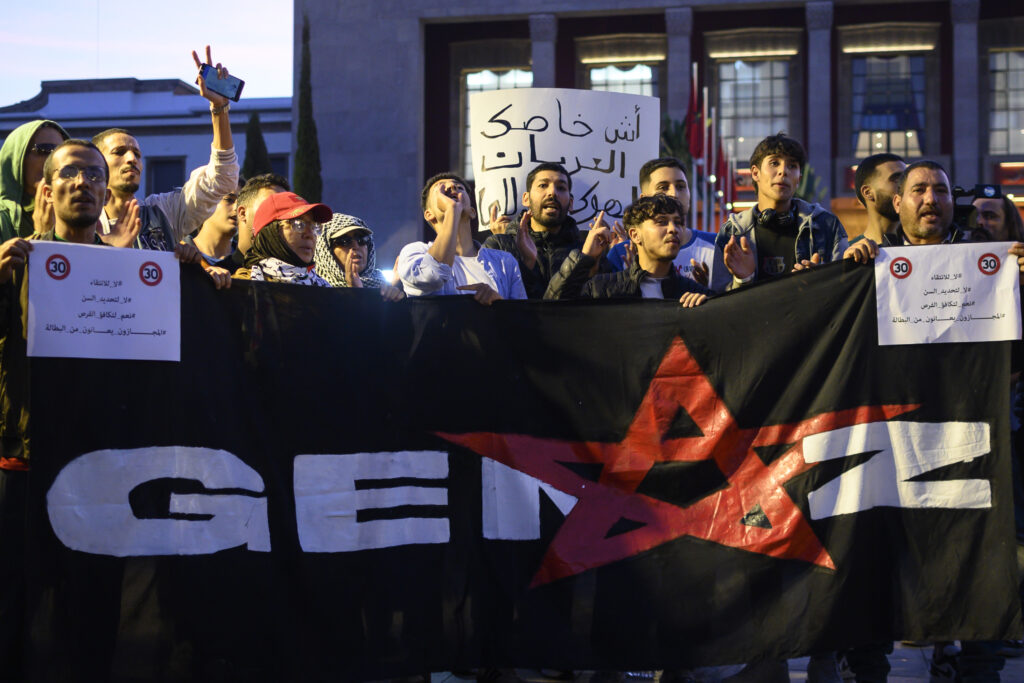Politics
Global Youth Uprisings: Seven Nations Unite in Protest

Across the globe, youth-led protests have erupted in seven countries, marking a significant moment in political activism. These movements, reflecting the frustrations of a generation, have emerged from diverse contexts but share common themes of discontent with governance, economic hardship, and calls for systemic change.
The recent wave of protests began with young people in **Kenya**, where demonstrations broke out in response to rising living costs and youth unemployment following the announcement of new tax hikes in 2024. Similarly, in **Indonesia**, activists voiced their disapproval over high allowances for parliament members and issues with the government’s school meals program, which led to widespread food poisoning. In the **Philippines**, public outcry commenced in September over misallocated flood relief funds.
In **Nepal**, anger over government bans on social media culminated in the burning of the parliament building, resulting in the ousting of the government on **September 9**. Meanwhile, **Peruvian** youth have mobilized against crime and corruption, igniting discussions about governmental overhaul. The **Gen Z 212** movement in **Morocco** expressed frustration with the allocation of public funds for the 2030 World Cup instead of essential services. Most recently, protests in **Madagascar** over water and electricity failures led to the president’s exile and a military-led government change.
While the root causes of these protests vary, what stands out is the significant role that young people are playing in reshaping political landscapes. The protests in these countries are not isolated events; they mirror global trends seen previously during the **Arab Spring** and more recent political shifts in **Botswana** and **South Africa**, where young voters significantly influenced electoral outcomes.
Common Threads Among Global Protests
A closer examination of these movements reveals shared characteristics. Six of the seven countries involved rank above their regional averages in terms of political rights, according to the Freedom Index, suggesting a better protection of freedoms compared to their neighbors. The sole exception, **Peru**, saw a recent decline in its political rights score, dipping below the regional average for Latin America and the Caribbean.
Despite these political rights, all seven nations perform below the regional average in key prosperity metrics, including income, health, and education. This disparity indicates a potential correlation between relatively high levels of political expression and the frustration stemming from inadequate access to essential services.
Moreover, each of these countries boasts a notably youthful population. The median age in all seven is lower than the global median, with a larger percentage of individuals aged fifteen to twenty-four compared to the global average. This demographic dynamic creates a fertile ground for political activism, as young people increasingly understand their democratic rights and express expectations for government accountability.
Impact and Future of Youth Movements
The consequences of these movements have been mixed. In **Kenya**, protests led to President **William Ruto** retracting a controversial tax bill, yet many demonstrators expressed dissatisfaction with the lack of broader systemic change. In **Morocco**, the government has pledged to enhance health and education funding in response to protests, yet public discontent persists.
The outcomes in **Nepal** and **Madagascar** have been more drastic, with both countries witnessing regime changes. In these cases, the military played a role in facilitating the transition from the former governments to interim military-led administrations. However, the initial political influence of the youth movements appears to have diminished as new governing bodies take shape. For instance, young activists in Madagascar have voiced concerns over the selection of a career politician to lead the National Assembly.
Looking ahead, two pressing questions arise. First, can these young activists sustain their momentum to foster lasting democratic reforms? The historical context of previous uprisings, such as the **Arab Spring**, suggests that achieving accountable governance will be challenging.
Second, is it possible to predict where similar youth-led protests may emerge next? Countries like **Honduras** and **Côte d’Ivoire** exhibit characteristics akin to those of the seven nations currently experiencing unrest. Both have high youth populations and concerns regarding political corruption and inadequate public service delivery. As frustrations grow, these nations may also witness movements similar to those observed globally.
The collective actions of these young people demonstrate their capacity to instigate change through organized protests, amplified by technology and global connectivity. Whether their demands for better governance will be addressed remains uncertain, but their voices are indeed being heard on a global scale.
-

 Politics2 weeks ago
Politics2 weeks agoHamas Chief Stresses Disarmament Tied to Occupation’s End
-

 Science1 week ago
Science1 week agoOhio State Study Uncovers Brain Connectivity and Function Links
-

 Science3 weeks ago
Science3 weeks agoResearchers Challenge 200-Year-Old Physics Principle with Atomic Engines
-

 Entertainment1 week ago
Entertainment1 week agoMegan Thee Stallion Exposes Alleged Online Attack by Bots
-

 Top Stories2 weeks ago
Top Stories2 weeks agoFederal Agents Detain Driver in Addison; Protests Erupt Immediately
-

 Top Stories2 weeks ago
Top Stories2 weeks agoOrioles Hire Craig Albernaz as New Manager Amid Rebuild
-

 Entertainment2 weeks ago
Entertainment2 weeks agoSyracuse Stage Delivers Lively Adaptation of ‘The 39 Steps’
-

 World3 weeks ago
World3 weeks agoGlobal Military Spending: Air Forces Ranked by Budget and Capability
-

 Top Stories2 weeks ago
Top Stories2 weeks agoWill Smith Powers Dodgers to World Series Tie with Key Homer
-

 Politics3 weeks ago
Politics3 weeks agoNHP Foundation Secures Land for 158 Affordable Apartments in Denver
-

 Business1 week ago
Business1 week agoHome Depot Slashes Prices on Halloween Favorites Up to 75%
-

 Entertainment1 week ago
Entertainment1 week agoPaloma Elsesser Shines at LA Event with Iconic Slicked-Back Bun









